Estudios importantes sobre hipertension arterial de Cuba y el mundo
Central blood pressure: a powerful predictor of the development of hypertension
 Por: Hirofumi Tomiyama, Michael F O’rourke, Hideki Hashimoto, Chisa Matsumoto, Mari Odaira, Masanobu Yoshida, Kazuki Shiina, Mikio Nagata y Akira Yamashina. Hypertension Research (2013) 36, 19–24.
Por: Hirofumi Tomiyama, Michael F O’rourke, Hideki Hashimoto, Chisa Matsumoto, Mari Odaira, Masanobu Yoshida, Kazuki Shiina, Mikio Nagata y Akira Yamashina. Hypertension Research (2013) 36, 19–24.
We examined whether the central aortic systolic blood pressure, a marker of the function of the systemic arterial tree, might be a more powerful predictor of the development of hypertension than the brachial-ankle pulse wave velocity, a marker of the stiffness of the large- to middle-sized arteries, independent of the conventional risk factors for the development of hypertension. In 1268 Japanese men without hypertension (43±8 years old), the relationships between three variables (the second peak of the radial pressure waveform (SP2), brachial-ankle pulse wave velocity and conventional risk factors measured at the first examination) with the presence of hypertension at the second examination (after 3 years’ follow-up) were examined.
Un estudo concluyó que el extracto de azafrán redujo la presión arterial en animales
 Un estudio realizado por investigadores de la Facultad de Medicina de Mashhad, ubicada al noreste de Irán, concluyeron que el extracto de azafrán y sus dos composiciones -saffranal y crocina- pueden reducir los niveles de presión arterial en los seres humanos.
Un estudio realizado por investigadores de la Facultad de Medicina de Mashhad, ubicada al noreste de Irán, concluyeron que el extracto de azafrán y sus dos composiciones -saffranal y crocina- pueden reducir los niveles de presión arterial en los seres humanos.
Los científicos aplicaron tres dosis de crocina, saffranal y extracto de azafrán, por vía intravenosa, a un grupo de animales con presión arterial normal y varios con hipertensión, para luego estudiar sus efectos sobre la presión arterial media (PAM) y el latido cardiaco.
En informe determinó que la crocina, el saffranal y el extracto de azafrán redujeron la presión arterial en los animales a los que fueron inyectados.
Igualmente, el estudio defiende que el extracto de estigma de azafrán incide en la reducción de la presión arterial y ello se produce gracias al saffranal y la crocina.
Más del 90 por ciento del azafrán en el mundo se produce en Irán. De ese porcentaje, aproximadamente el 77 por ciento pertenece a la provincia de Jorasán-Razavi, al noreste del territorio.
El cultivo del azafrán, llamado también rey de las especias y oro rojo, se remonta hasta antes del nacimiento de Cristo y, actualmente, se está expandiendo en zonas que se caracterizan por tener inviernos fríos y veranos cálidos de pocas lluvias.
El azafrán puede utilizarse al cocinar o preparar una infusión. Algunas personas añaden una pizca de azafrán al té para hacer más agradable su sabor.
En Medio Oriente, el azafrán era empleado comúnmente para luchar contra la depresión ligera o moderada, tenía la reputación de traer alegría y sabiduría. Por eso, se le confiere también cualidades de afrodisíaco femenino.
(Fuente: teleSUR-HispanTV-IRIB-Cepvi/MARL)
 Por: Stephen J. Nicholls, MBBS, PhD; George L. Bakris, MD; John J. P. Kastelein, MD, PhD; Venu Menon, MD4,; Bryan Williams, MD; Juergen Armbrecht, MD; Patrick Brunel, MD; Maria Nicolaides, MD; Amy Hsu, MS5; Bo Hu, PhD; Hui Fang, PhD; Rishi Puri, MBBS; Kiyoko Uno, MD, PhD; Yu Kataoka, MD, PhD; Dianna Bash, RN y Steven E. Nissen, MD. JAMA. 2013;310(11):1135-1144. doi:10.1001/jama.2013.277169.
Por: Stephen J. Nicholls, MBBS, PhD; George L. Bakris, MD; John J. P. Kastelein, MD, PhD; Venu Menon, MD4,; Bryan Williams, MD; Juergen Armbrecht, MD; Patrick Brunel, MD; Maria Nicolaides, MD; Amy Hsu, MS5; Bo Hu, PhD; Hui Fang, PhD; Rishi Puri, MBBS; Kiyoko Uno, MD, PhD; Yu Kataoka, MD, PhD; Dianna Bash, RN y Steven E. Nissen, MD. JAMA. 2013;310(11):1135-1144. doi:10.1001/jama.2013.277169.
The Aliskiren Quantitative Atherosclerosis Regression Intravascular Ultrasound Study (AQUARIUS) was a prospective, randomized, multicenter, double-blind clinical trial. Randomization was stratified according to geographic region. Blood pressure reduction and renin-angiotensin-aldosterone system inhibition are targets for treatment of atherosclerosis. The effect of renin inhibition on coronary disease progression has not been investigated. To determine the effects of renin inhibition with aliskiren on progression of coronary atherosclerosis.
How can resistant hypertension be identified and prevented?
 Por: Anna Solini y Luis M. Ruilope. Nature Reviews Cardiology 10, 293-296 (May 2013).
Por: Anna Solini y Luis M. Ruilope. Nature Reviews Cardiology 10, 293-296 (May 2013).
Resistant hypertension is highly prevalent, and is the form of arterial hypertension that is most difficult to treat. Many patients diagnosed with this disease do not have resistant hypertension, but rather have mismanaged primary hypertension. In many cases blood pressure can be controlled by directly addressing underlying causes such as primary aldosteronism, obstructive sleep apnoea, or excessive neurogenic stimulation. Clinicians should ensure that appropriate blood-pressure measurements are used to diagnose resistant hypertension, explore a variety of drug combinations, and battle clinical inertia. Patients should comply with medication schedules and dietary modifications. Correction of these factors will greatly diminish the prevalence of ‘resistant’ hypertension and avoid the consequences of a persistently elevated blood pressure in these patients.
Assessment and management of blood-pressure variability
 Por: Gianfranco Parati, Juan E. Ochoa, Carolina Lombardi y Grzegorz Bilo. Nature Reviews Cardiology 10, 143-155 (March 2013).
Por: Gianfranco Parati, Juan E. Ochoa, Carolina Lombardi y Grzegorz Bilo. Nature Reviews Cardiology 10, 143-155 (March 2013).
Blood pressure (BP) is characterized by marked short-term fluctuations occurring within a 24 h period, including beat-to-beat, minute-to-minute, hour-to-hour, and day-to-night changes. Long-term, substantial variations in BP have also been shown to occur over more-prolonged periods of time, for example days, weeks, months, seasons, and even years. Rather than representing ‘background noise’, or a phenomenon occurring at random, these variations are thought to be the result of complex interactions between extrinsic environmental and behavioural factors and intrinsic cardiovascular regulatory mechanisms (neural central, neural reflex, and humoral influences) that are not yet completely understood.

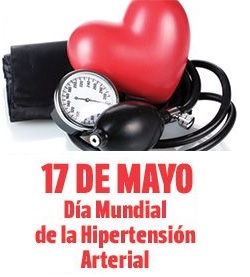
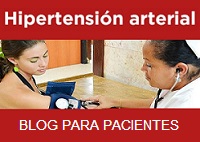


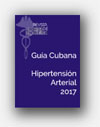
![Glosario: hipertensión [Hipertensión arterial en la atención primaria de salud. 2009]](http://temas.sld.cu/hipertension/files/2016/04/Glosario-e1541006177950.jpg)
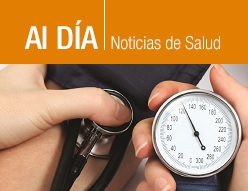
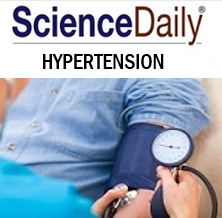

Comentarios recientes